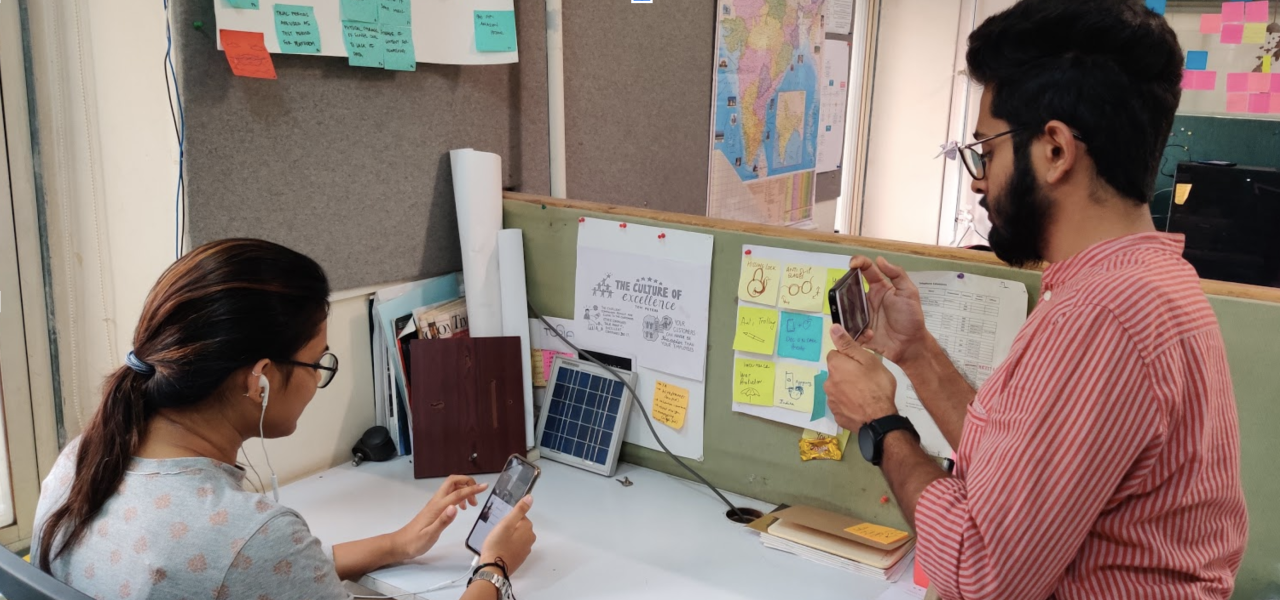
Advantage Remote UX Research / Virtual Empathy
How lockdown helped us conduct better empathic research remotely
In case of business-as-usual scenario, our teams travel to different corners of the country and at times to different countries for in-depth empathic research/ethnography. In the wake of the pandemic, Turian Labs had to improvise the user-research methods from in-person to remote-research mode. While it is easy to think of technology tools with the word ‘remote’, EMPATHIC RESEARCH sounds paradoxical. Since the beginning of the lockdown in March 2020, we have already completed several projects in the remote-research mode across India, Brazil and Indonesia. We hypothesised a new method, built new protocols and tested them in the true spirit of practising Design Thinking, as we preach. Our research respondents have been professionals, small businesses and consumers/users across the economic strata (including people with marginal income).
Empathy is a very important tenet in the user-research. In ethnographic research, the most crucial part of meeting participants for a short time (1-2 hours) and interviewing them to find insights, is building rapport with them so that they open up. As researchers, we make sure that our respondents are at ease, during the session. We perceive this by their body language and expressions, this gives us hints on how they are feeling and often helps in providing cues of how to navigate the session. A slouch could mean the participant is tired, wandering eyes say that they are distracted, these are signs for the moderator to change the gear in the interaction.
How does one make sure that they are comfortable answering the questions from a stranger so far away? Most respondents at this point would be edging on discomfort, bedazzled with the remote conferencing technology. Strangely, in this COVID19 scenario, this has been less of a challenge for us. Here are our pleasant findings on how a better conversation took place between the respondents and our team.
- ‘Situation buddies’: Our research teams interact with research respondents across SEC’s (socio economic segments) as well as professionals. Most of the time, there is a team of two along with a media handler and client team member, walking into the respondent’s home/office. All said and done there is always an ‘otherness’ in the interaction despite all the warm-up discussion we do. This is the first time the respondents are interacting with the interviewer/researchers who are part of the same situation (trapped at home due to Covid19) as them. When our team told the respondents that we all are working from home (in different cities) due to the current situation, there was a strange bon-homie established. When both sides talked on video in a home setting, mutual rapport establishment took less time than the offline scenarios.
- At home, at peace: While during in-person research as well, our team meets the participants in their habitat, in remote-research cases they are at home and there is a lesser fear of overarching presence of the research team. Although they face the camera of their own mobile phone for video conference, it appears less of a threat than a stranger sitting inside their home in the other case.
- Prep & Prototype: Preparing the respondents started way before the interaction. This includes onboarding them onto the methodology of the session, explaining to them the various activities which will be undertaken as part of the interaction. Our team ran a complete training session a day before with the research respondents, with step by step app installation guide and method of conducting the research over a video call. The prep also included internet speed check on the respondent mobile devices. In scenarios where we were dealing with lower income strata, we also helped them with topping up with their internet packs. This helped us keep in check the majority of the variables, which may potentially impact the interaction.
- Frugal Tech for Remote Moderation: Since we were not carrying our cameras and laptop paraphernalia to the user’s homes, we had to improvise to create a two-camera situation -i.e. one camera focusing on the mobile device to capture the respondents interaction with the mobile device and the other one focusing on his/her face to capture the expressions. Not all research can use the tech solutions like Lookback or Validately, which are rather mobile phone usability research specific tools. For more lifestyle related discussions or trying to understand the struggle of actions on the mobile phone, one does need two-cameras to be at the respondent’s home.
- They need us as much as we need them: Being at home is difficult when you also have to be productive without full infrastructure around. Most respondents interacted with us feeling that this was the ‘productive’ part of their day. As a company, we need user feedback, but we are providing interactions at a time when people need it the most, and this is validated by every session we took remotely. We were told by their respondents that ‘this interaction was a break from their family routine’ while their kid yelled in the background, one said that ‘it is good to talk to someone now’.
Written with generous inputs from Ayesha Punjabi, Deepali Modi, Satya Srivastava and Shruti Rathi of Turian team.
Turian Labs is a Design led Research and Innovation Strategy consulting company with user research practice spanning across domains. We conduct over 1000 in-depth interactions with users/experts across demographics & geographies every year to build innovation direction for our clients. We have built our own remote user research methodology and further sharpened it during the Covid19 situation.
Turian Labs has been working with Google across hundreds of projects, multi-year and multi-country (including USA) engagement since 2015. Our work with Google spans 360 deg mandates from foundational research, concept viability research to usability studies.